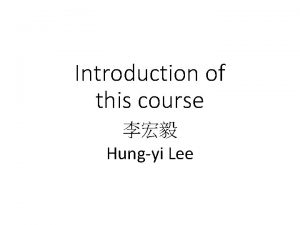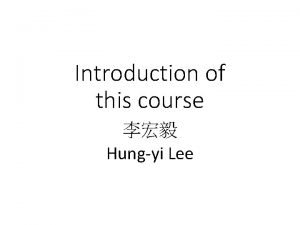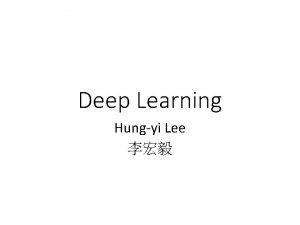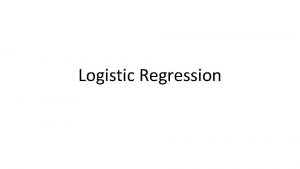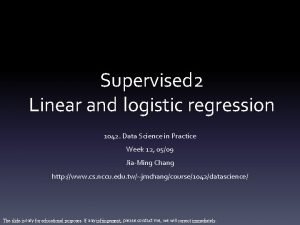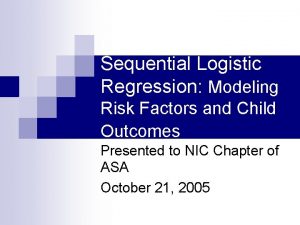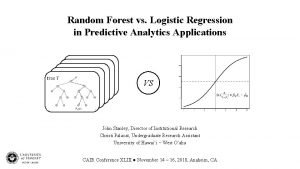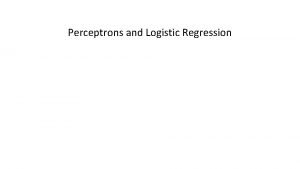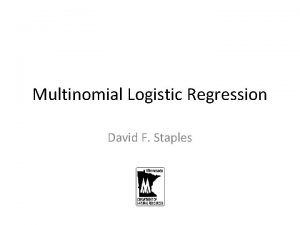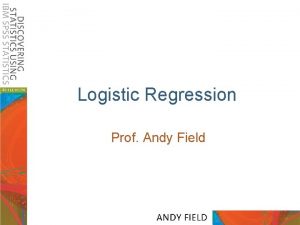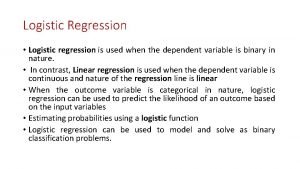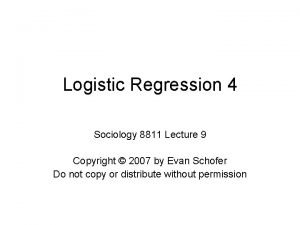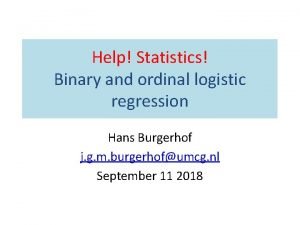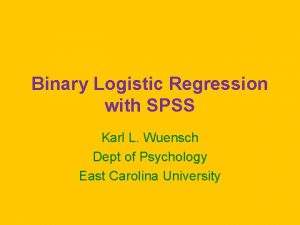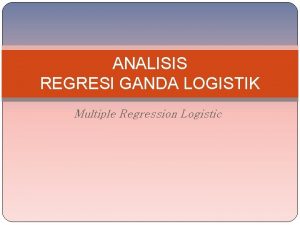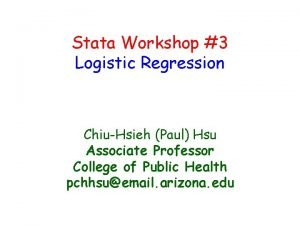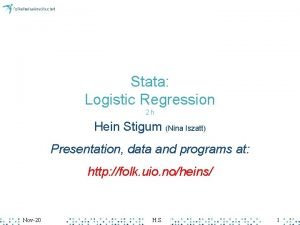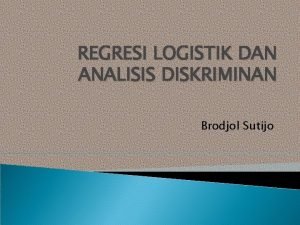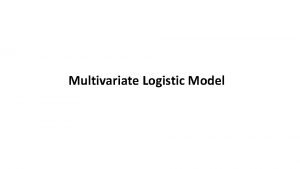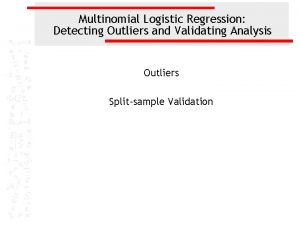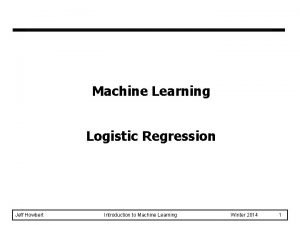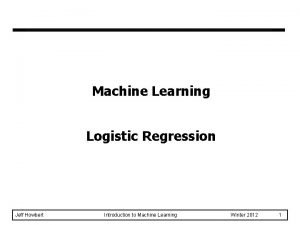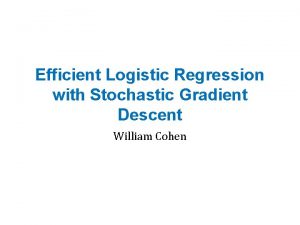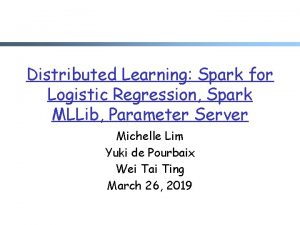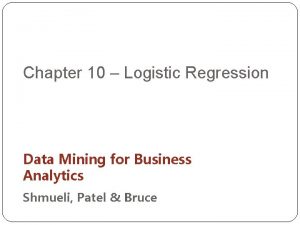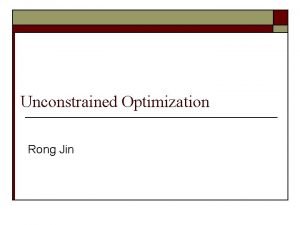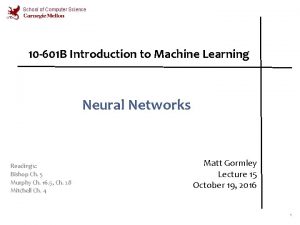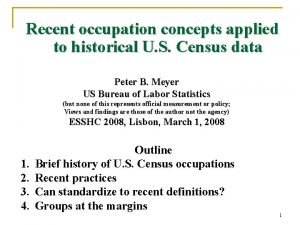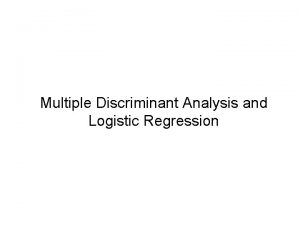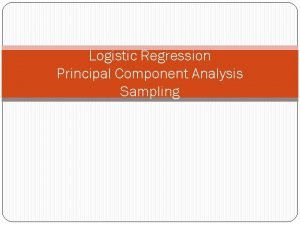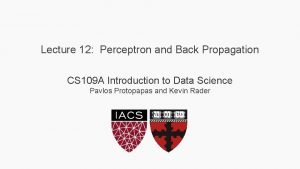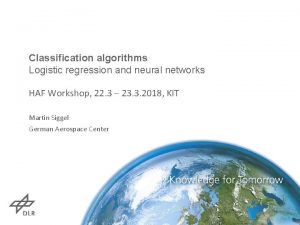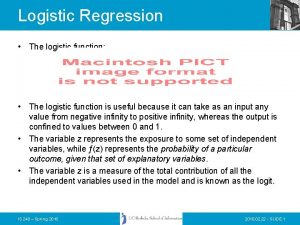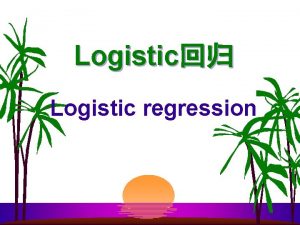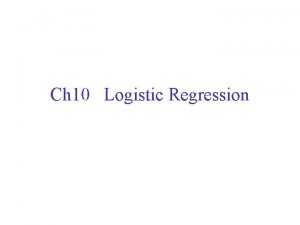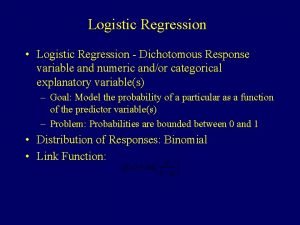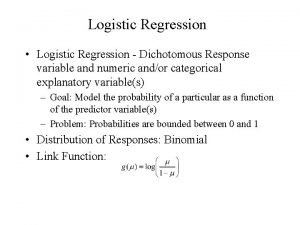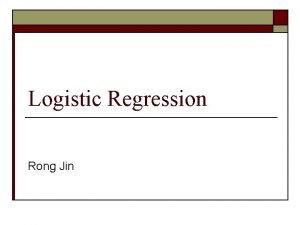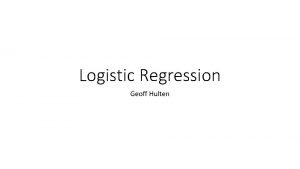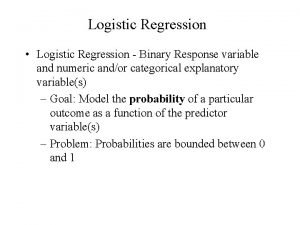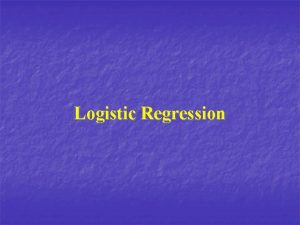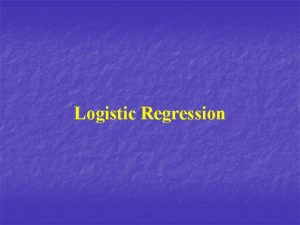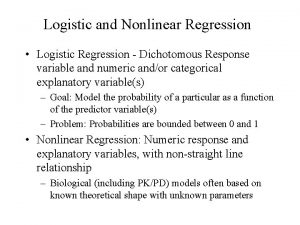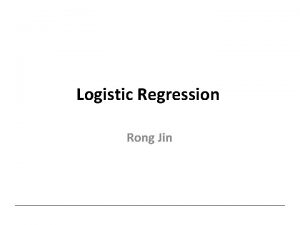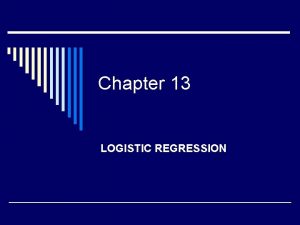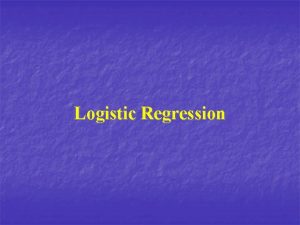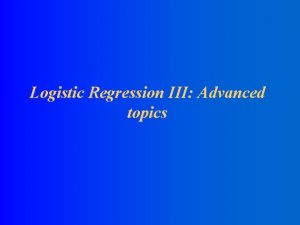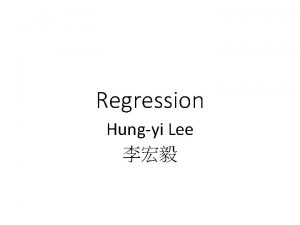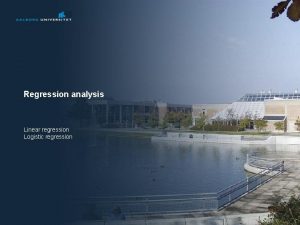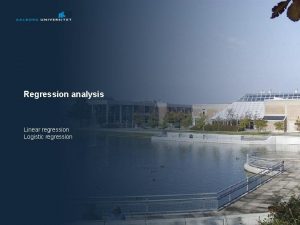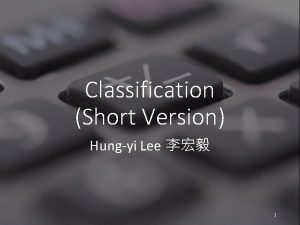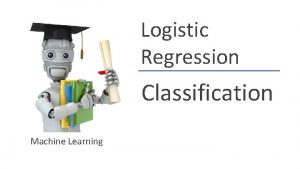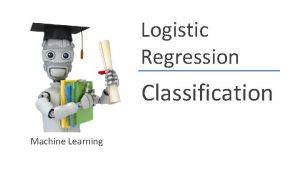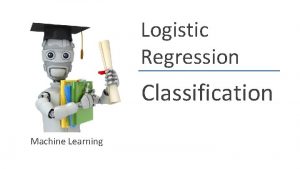Classification Logistic Regression Hungyi Lee Step 1 Function
























![Multi-class Classification (3 classes as example) [Bishop, P 209 -210] Cross Entropy Softmax target Multi-class Classification (3 classes as example) [Bishop, P 209 -210] Cross Entropy Softmax target](https://slidetodoc.com/presentation_image/334455aa30f6e09f28dfe81950fc0759/image-25.jpg)













- Slides: 38

Classification: Logistic Regression Hung-yi Lee 李宏毅


Step 1: Function Set Function set: Including all different w and b z 0 class 1 z 0 class 2

Step 1: Function Set … … Sigmoid Function

Step 2: Goodness of a Function Training Data Given a set of w and b, what is its probability of generating the data?


Step 2: Goodness of a Function Cross entropy between two Bernoulli distribution Distribution p: Distribution q: cross entropy

Step 2: Goodness of a Function Cross entropy between two Bernoulli distribution 0. 0 1. 0 minimize cross entropy

Step 3: Find the best function

Step 3: Find the best function

Step 3: Find the best function Larger difference, larger update

Logistic Regression + Square Error Step 1: Step 2: Step 3: (close to target) (far from target)

Logistic Regression + Square Error Step 1: Step 2: Step 3: (far from target) (close to target)

Cross Entropy v. s. Square Error Cross Entropy Total Loss Square Error http: //jmlr. org/proceedi ngs/papers/v 9/glorot 10 a. pdf w 1 w 2

Logistic Regression Linear Regression Step 1: Output: between 0 and 1 Step 2: Step 3: Output: any value

Logistic Regression Linear Regression Step 1: Output: between 0 and 1 Step 2: Cross entropy: Output: any value

Logistic Regression Linear Regression Step 1: Output: between 0 and 1 Step 2: Step 3: Logistic regression: Linear regression: Output: any value

Discriminative v. s. Generative directly find w and b Will we obtain the same set of w and b? The same model (function set), but different function may be selected by the same training data.

Generative v. s. Discriminative Generative Discriminative All: hp, att, sp att, de, speed 73% accuracy 79% accuracy

Generative v. s. Discriminative • Example Training Data Testing Data 1 1 X 4 1 0 Class 1 Class 2 1 1 Class 1? Class 2? 0 1 Class 2 X 4 0 0 X 4 Class 2 How about Naïve Bayes?

Generative v. s. Discriminative • Example Training Data 1 1 X 4 1 0 Class 1 Class 2 0 1 Class 2 X 4 0 0 X 4 Class 2

Training Data 1 1 1 0 Class 1 Class 2 <0. 5 Testing Data 1 1 X 4 0 1 Class 2 X 4 0 0 X 4 Class 2

Generative v. s. Discriminative • Usually people believe discriminative model is better • Benefit of generative model • With the assumption of probability distribution • less training data is needed • more robust to the noise • Priors and class-dependent probabilities can be estimated from different sources.

Multi-class Classification (3 classes as example) C 1 : C 2 : C 3 : Softmax 3 1 -3 0. 88 20 0. 12 2. 7 0. 05 ≈0
![Multiclass Classification 3 classes as example Bishop P 209 210 Cross Entropy Softmax target Multi-class Classification (3 classes as example) [Bishop, P 209 -210] Cross Entropy Softmax target](https://slidetodoc.com/presentation_image/334455aa30f6e09f28dfe81950fc0759/image-25.jpg)
Multi-class Classification (3 classes as example) [Bishop, P 209 -210] Cross Entropy Softmax target

Limitation of Logistic Regression Input Feature x 1 x 2 0 0 0 1 1 1 0 1 Can we? Label Class 2 Class 1 Class 2 z≥ 0 z<0 z≥ 0

Limitation of Logistic Regression • Feature transformation Not always easy …. . domain knowledge can be helpful

Limitation of Logistic Regression • Cascading logistic regression models Feature Transformation Classification (ignore bias in this figure)

-1 -2 2 2 -2 -1

(0. 73, 0. 05) (0. 27, 0. 27) (0. 05, 0. 73)

Deep Learning! All the parameters of the logistic regressions are jointly learned. “Neuron” Feature Transformation Classification Neural Network

Reference • Bishop: Chapter 4. 3


Appendix

Three Steps • Step 1. Function Set (Model) feature Otherwise, output: y = class 2 • Step 2. Goodness of a function • Step 3. Find the best function: gradient descent class

Step 2: Loss function Ideal loss: 0 class +1 1 z 0 class -1 2 Approximation: 0 or 1 Ideal loss z

Step 2: Loss function cross entropy Ground 1. 0 Truth

Step 2: Loss function Ideal loss Divided by ln 2 here
 Logistic regression vs linear regression
Logistic regression vs linear regression Logistic regression vs linear regression
Logistic regression vs linear regression Step 1 step 2 step 3 step 4
Step 1 step 2 step 3 step 4 Hungyi lee
Hungyi lee Hungyi lee
Hungyi lee Hungyi
Hungyi Hungyi lee
Hungyi lee Hungyi
Hungyi Cost function logistic regression
Cost function logistic regression Null deviance vs residual deviance
Null deviance vs residual deviance Sequential logistic regression
Sequential logistic regression Logistic regression vs random forest
Logistic regression vs random forest Perceptron logistic regression
Perceptron logistic regression Multinomial logistic regression
Multinomial logistic regression Andy field regression
Andy field regression Logistic function
Logistic function Multinomial logistic regression
Multinomial logistic regression Logistic regression epidemiology
Logistic regression epidemiology Binary
Binary Logistic regression spss output
Logistic regression spss output Regresi logistik berganda adalah
Regresi logistik berganda adalah Logistic regression stata
Logistic regression stata Logistic regression stata
Logistic regression stata Multiple linear regression
Multiple linear regression Logistic regression slide
Logistic regression slide Ratio test
Ratio test Logistic regression outlier
Logistic regression outlier Advantage of logistic regression
Advantage of logistic regression Disadvantages of linear regression
Disadvantages of linear regression Logistic regression stochastic gradient descent
Logistic regression stochastic gradient descent Mllib logistic regression
Mllib logistic regression Logistic regression in data mining
Logistic regression in data mining Hessian matrix for 3 variables
Hessian matrix for 3 variables Backpropagation logistic regression
Backpropagation logistic regression Logistic regression assignment
Logistic regression assignment Logistic regression and discriminant analysis
Logistic regression and discriminant analysis Pca logistic regression
Pca logistic regression Backpropagation logistic regression
Backpropagation logistic regression Logistic regression backpropagation
Logistic regression backpropagation



